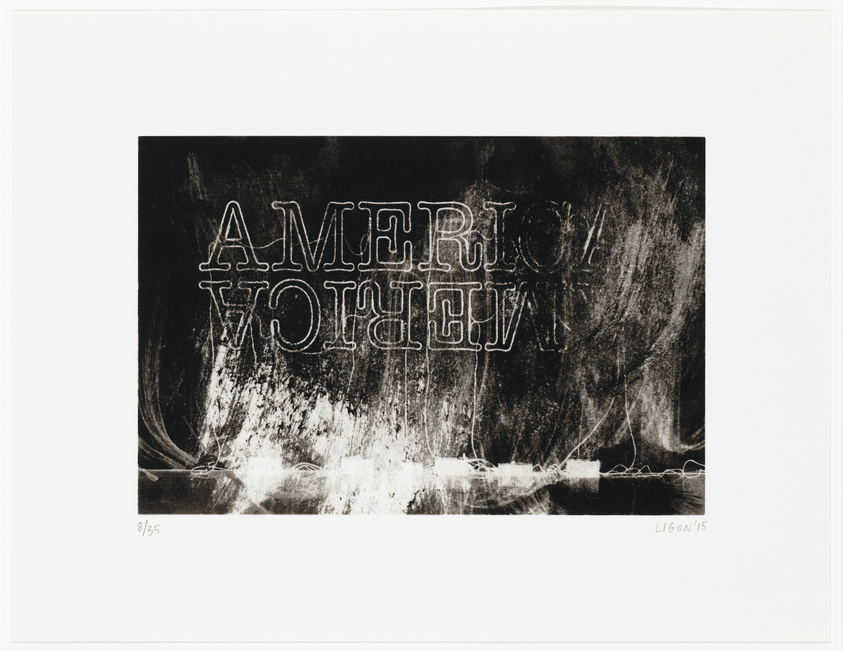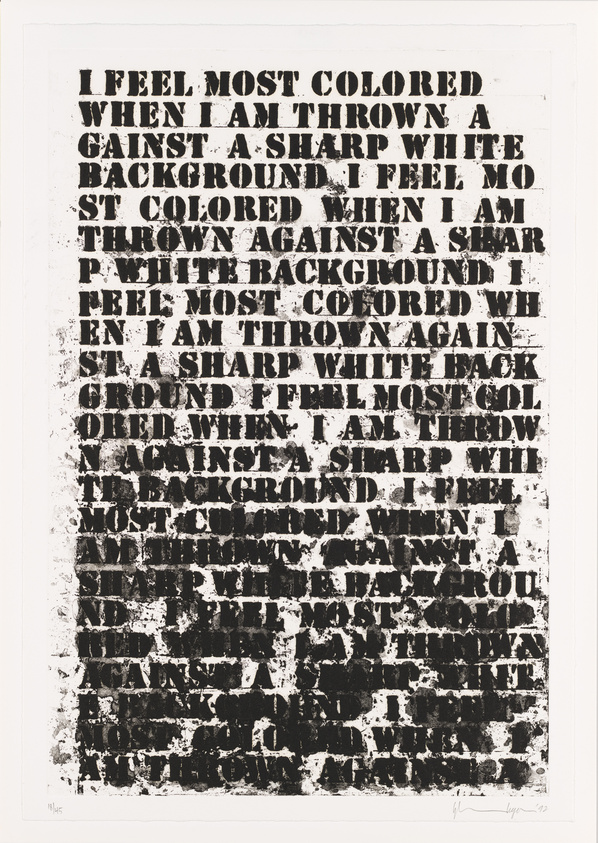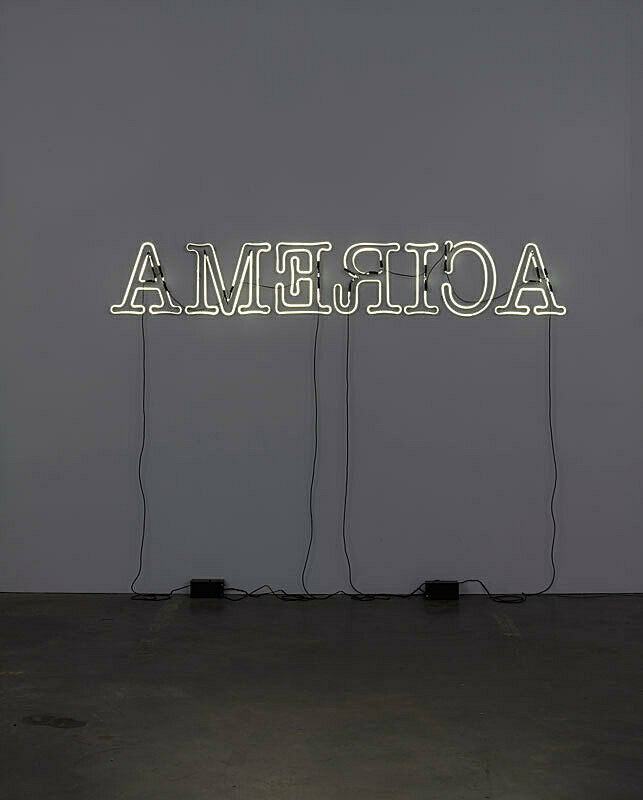Glenn Ligon, Untitled (I Feel Most Colored When I Am Thrown Against a Sharp White Background), 1990
Mar 11, 2011
0:00
Glenn Ligon, Untitled (I Feel Most Colored When I Am Thrown Against a Sharp White Background), 1990
0:00
Narrator: I feel most colored when I am thrown against a sharp white background. Ligon has stenciled the sentence over and over until the words smear and dissolve into abstract patterns. Glenn Ligon:
Glenn Ligon: Oil paint wants to spread out and smudge and smear. And after about six months of trying to make perfect letters, I realized that the smudging and smearing and disappearance of the letters was way more interesting than trying to make a perfect letter form. And so the paintings became about that disappearance of language.
Narrator: The text comes from writer Zora Neale Hurston’s 1928 essay “How It Feels to Be Colored Me.” Hurston describes leaving the protective black community of her childhood at age thirteen and suddenly confronting the issue of race. The painting’s illegible words embody her confusion, something Ligon builds on:
Glenn Ligon: I became really fascinated by those sentences that had the word “I” in them—"I feel most colored when I'm thrown against a sharp white background.” The use of the word “I” creates a kind of confusion. Is it the “I” of the text that I'm quoting, or is it “I,” Glenn Ligon, feel most colored? And so, the confusion between those two things was something I was interested in.
Narrator: Ligon’s surface here is actually a door. Its human scale is ideal for a text that speaks in the first person, its hard surface suggests Hurston’s “sharp white background.”



